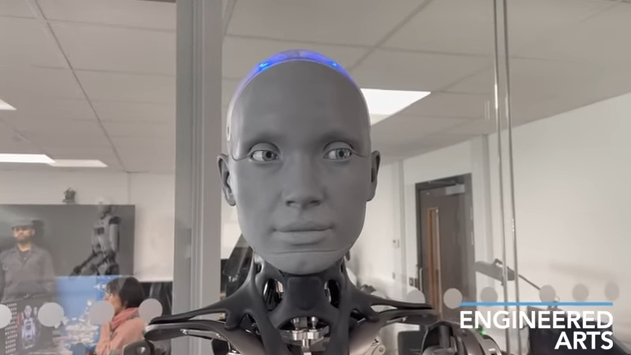
Geminoid DK, unveiled in 2011, astonished the world with its realistic facial expressions. Composed of a metal frame covered in silicone skin, human and synthetic hair, the robot looks identical to Danish professor Henrik Schärfe. Developed by Hanson Robotics, ATR (Advanced Telecommunications Research Institute International), and Kokoro Robotics (a subsidiary of the Sanrio Group), Geminoid DK features air-powered actuators in its face, neck, and shoulders. It autonomously performs breathing and blinking movements, aiming to study human-robot interactions and people’s reactions to lifelike robotic duplicates.
Nadine, a social humanoid robot resembling Professor Nadia Magnenat Thalmann, was created as a receptionist or social companion for people with special needs. Designed by Kokoro in Japan and programmed by the NTU team in Singapore, Nadine reads stories, displays images, sends emails, makes video calls, and interacts with users using artificial intelligence. The robot speaks six languages, utilizing AI to remember faces and previous interactions, emphasizing its role in human-robot social engagement.
BINA48, unlike other humanoid robots, lacks a body trunk and consists of a head and attached shoulders on a frame. Designed by Hanson Robotics under the guidance of entrepreneur Martine Rothblatt, the founder of Terasem Movement, BINA48 explores the post-humanist concept. Commissioned to simulate Rothblatt’s wife, Bina Aspen, the robot aims to create the first digital representation of the human mind, exploring the possibility of preserving human consciousness beyond physical existence.
These humanoid robots showcase the diverse applications of artificial intelligence, ranging from studying human-robot interactions, providing companionship, to exploring the potential preservation of human consciousness through advanced technological simulations.
Leave a Reply